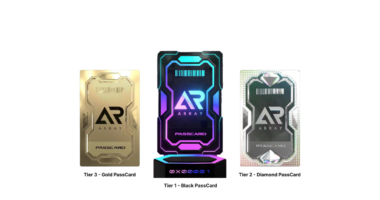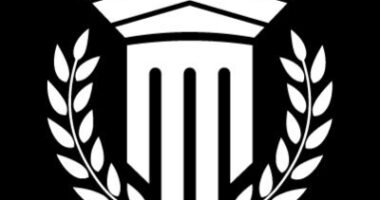Critical Metals Corp. secured $50 million through a private investment deal with a leading institutional investor on October 16, sending shares jumping 7.42% as markets digested the implications. The funding targets the company’s Tanbreez rare earth project in Greenland, one of the world’s largest deposits of heavy rare earth elements.
Finance expert at Servelius explores what this capital injection reveals about the scramble to secure Western supply chains for materials that China currently dominates.
The Greenland Advantage Nobody Expected
Critical Metals Corp. focuses on lithium and rare earth element deposits in Austria and Southern Greenland, positioning itself at the intersection of two massive supply chain vulnerabilities. Greenland’s political stability under Danish sovereignty combined with proximity to North American markets creates strategic value beyond simple geology.
The Tanbreez project holds particular significance given its heavy rare earth concentration. Light rare earths like cerium and lanthanum are relatively abundant globally, but heavy rare earths including dysprosium, terbium and yttrium face severe supply constraints outside Chinese production.
Why Heavy Elements Matter More
These heavy elements prove essential for permanent magnets in electric vehicles, wind turbines, and defense systems. Current Western production capacity barely registers compared to demand projections through 2030, creating the supply gap that attracted institutional capital.
The securities purchase agreement through a private investment in public equity transaction carries more significance than the dollar amount suggests. Institutional investors conducting extensive due diligence before committing eight-figure checks typically see opportunities that retail markets haven’t fully priced yet.
Critical Metals Corp.’s CEO and Chairman stated the proceeds will support development efforts at a deposit expected to help address growing demand for heavy rare earths in Western markets. This phrasing matters because it positions Tanbreez as a geopolitical asset rather than just a mining project.
China’s Grip on Processing
The timing aligns with broader Western efforts to reduce dependence on Chinese rare earth supplies. China controls roughly 85% of global rare earth processing capacity despite holding only about 35% of known reserves, creating vulnerability that recent trade tensions have amplified significantly.
Most rare earth projects require seven to ten years from discovery to commercial production. The Tanbreez deposit benefits from previous exploration work dating back decades, potentially shortening this timeline compared to greenfield projects starting from scratch.
However, even accelerated development means production likely won’t begin until the late 2020s at the earliest. This gap between current supply shortages and future production creates investment risk that the $50 million infusion aims to bridge through continued advancement.
Price Volatility Creates Risk
Heavy rare earth pricing has demonstrated extreme volatility over the past decade. Dysprosium oxide traded above $3,000 per kilogram during 2011 supply concerns before collapsing below $300 in subsequent years as Chinese production ramped up.
Current prices hover around $350 to $400 per kilogram, reflecting modest supply tightness but not the panic levels seen during previous shortages. However, demand projections suggest structural deficits emerging as electric vehicle adoption accelerates and defense spending increases globally.
The economics of Tanbreez depend heavily on these price assumptions. Break-even costs for rare earth mining typically run $200 to $300 per kilogram for heavy elements, leaving reasonable margins at current prices but vulnerability if Chinese producers decide to flood markets.
Processing Remains The Bottleneck
Mining rare earth ore represents only the first step in a complex value chain. The ore requires chemical processing to separate individual elements, a step where China maintains overwhelming dominance through decades of accumulated expertise and environmental tolerance.
Critical Metals Corp. will need processing partnerships or captive facilities to convert Tanbreez ore into sellable products. The $50 million likely funds initial mining infrastructure, but processing represents a separate capital requirement, potentially exceeding mining costs.
Several Western companies are building rare earth processing capacity, including MP Materials in California and Lynas Rare Earths in Texas. These facilities create potential offtake partners for Greenland production, though capacity constraints mean competition for processing slots remains fierce.
Market Reaction Tells The Story
The 7.42% share price jump following the funding announcement suggests investors view the $50 million as validation rather than simple dilution. The institutional backing implies professional investors completed extensive analysis concluding Tanbreez offers compelling risk adjusted returns.
However, Critical Metals Corp. remains a speculative play dependent on successful development execution, favorable rare earth prices and processing capacity availability. The path from current exploration to steady cash flow production involves numerous hurdles where projects commonly fail.
What Comes Next
Critical Metals Corp. faces several key milestones that will determine whether this capital injection translates into shareholder value. Securing processing partnerships or building captive capacity represents the most pressing challenge beyond basic mining infrastructure.
Environmental permits in Greenland require navigating both Danish and local approval processes. The company will need to demonstrate sustainable mining practices that satisfy European environmental standards while maintaining economic viability of the project.
Whether Critical Metals Corp. successfully executes development and captures value for shareholders remains uncertain. However, the $50 million institutional investment signals that smart money sees opportunity in Greenland rare earths despite the risks and extended timelines involved in bringing new supply online.









